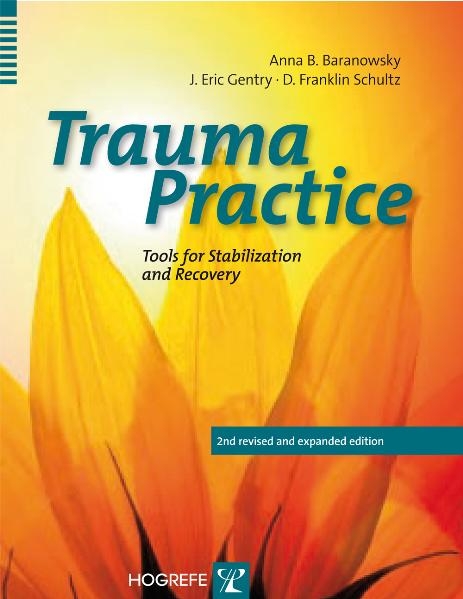
Trauma Practice
Hogrefe Publishing (Hersteller)
978-1-61676-380-0 (ISBN)
- Titel ist leider vergriffen;
keine Neuauflage - Artikel merken
Now in its 2nd revised and substantially expanded edition, it is full of techniques and protocols to assist therapists in their challenging work with trauma survivors. With its emphasis upon cognitive behavioral interventions, this book is an up-to-date tool kit for any psychotherapist working with any client The text is divided into three main sections corresponding to Herman's (1992) Triphasic Model: Safety and Stabilization, Remembrance and Mourning, and Reconnection. The authors present, clearly and in detail, an array of techniques, protocols, and interventions in the four categories of cognitive, behavioral, bodyoriented, and emotional/relational to assist the clinician in navigating each of these three phases. A section on Integrative & Clinician Self-Care Models to help ensure the wellbeing of practitioners working with trauma patients is also included.
Table of Contents Foreword... v Acknowledgments... vi Introduction: Trauma Practice: Tools for Stabilization and Recovery... 1 Purpose of This Book... 3 Self-of-the-Therapist... 4 Core Objectives... 4 Book Description... 5 Supportive Texts and Other Recommended Readings... 6 Section 1: Foundations of the Trauma Practice Model... 7 1. Behavioral Therapy... 10 2. Cognitive Therapy... 14 3. Cognitive-Behavioral Therapy... 15 4. Cognitive-Behavioral Therapy Research... 16 Expert Guidelines ... 16 The International Society for Traumatic Stress Studies (ISTSS) Practice Guidelines... 16 5. Psychophysiology of Trauma ... 18 6. Tri-Phasic Model... 21 Safety and Stabilization... 21 Trauma Memory Processing... 21 Reconnection... 21 7. Necessary Ingredients - Treatment Codes (R, RE, CR)... 22 8. Body, Cognition, Behavior, and Emotion/Relation... 22 9. Posttrauma Response... 23 Section 2: Safety and Stabilization ... 25 1. What Is Safety?... 28 Minimum Criterion Required for Transition to Phase II Treatment... 29 2. Body... 30 Creating a Nonanxious Presence (R - RE - CR)... 30 Titration Part I: Trigger List Using Braking and Acceleration (R - RE - CR) ... 34 Progressive Relaxation (R) ... 39 Autogenics (R - CR)... 40 Diaphragmatic Breathing (R) ... 42 3-6 Breathing (R)... 42 5-4-3-2-1 Sensory Grounding and Containment (R)... 44 Postural Grounding (R)... 44 Anchoring Part I: Collapsing Anchors (R) ... 45 3. Cognition... 46 Anchoring Part II: Safety (R) ... 46 Safe-Place Visualization (R)... 49 Positive Self-Talk and Thought Replacement/Transformation (CR) ... 50 Flashback Journal (R - RE)... 56 Thought-Stopping (R - RE - CR)... 58 Buddha's Trick (R - CR)... 58 4. Behavior ... 59 Rituals (R - CR) ... 59 Contract for Safety and Self-Care (R - CR) ... 62 Safety Net Plan (R - CR) ... 64 Timed and Metered Expression Strategies (R - RE) ... 66 x Trauma Practice: Tools for Stabilization and Recovery 5. Emotion/Relation ... 68 Transitional Objects (R)... 68 Support Systems (R - CR) ... 68 Drawing Icon and Envelope (Emotional Containment) (R - RE - CR)... 71 Internal Vault (Emotional Containment) (R - RE - CR) ... 71 Positive Hope Box (R - RE - CR)... 72 Section 3: Trauma Memory Processing ... 73 1. Body ... 76 Titration Part II: Braking and Acceleration (RE) ... 76 Layering (RE - CR)... 77 Comfort in One Part (RE) ... 80 A Time-Line Approach (RE - CR)... 80 Biofeedback (R - RE - CR) ... 81 2. Cognition ... 82 Downward Arrow Technique (RE - CR) ... 82 Cognitive Continuum (CR)... 83 Calculating True Danger (CR) ... 86 Looped Tape Scripting (RE - CR) ... 87 Cognitive Processing Therapy (RE - CR) ... 89 A Story-Book Approach (RE - CR) ... 91 A Written Narrative Approach (RE - CR) ... 91 3. Behavior ... 91 Behavior Change Rehearsal Exercise (RE - CR)... 91 Skills Building Methods (CR) ... 92 Imaginal and In-Vivo Exposure (RE)... 93 Stress Inoculation Training (RE - CR)... 94 Systematic Desensitization (RE) ... 99 4. Emotion/Relation... 99 Learning to Be Sad (CR)... 100 Assertiveness Training (CR) ... 104 Section 4: Reconnection... 105 1. Body... 108 Centering (CR) ... 108 2. Cognition... 109 Exploring Your Cognitive Map (CR) ... 109 Victim Mythology (CR) ... 116 Letter to Self (CR)... 116 3. Behavior... 117 Self-Help and Self-Development (CR)... 117 4. Emotion/Relation... 117 Memorials (CR)... 118 Connections with Others (RE - CR)... 120 Section 5: Integrative & Clinician Self-Care Models... 123 1. The Pinnacle Program: Healing Trauma by Principle-Based Living... 126 Introduction... 126 Phase I: Education... 130 Phase II: Intentionality ... 140 Phase III: Practice (Coaching and Desensitization) ... 146 Conclusion... 148 2. Compassion Fatigue: The Crucible of Transformation ... 150 Introduction... 150 Compassion Fatigue: The Crucible of Transformation ... 150 Table of Contents xi Compassion Fatigue ... 151 Accelerated Recovery Program for Compassion Fatigue... 154 Compassion Fatigue Specialist Training: Training-as-Treatment ... 154 Treatment and Prevention: Active Ingredients ... 155 The Crucible of Transformation ... 160 Suggestions for Compassion Fatigue Prevention and Resiliency... 161 Conclusion ... 162 References... 167 Appendices... 173 Appendix 1: Self-Regulation... 175 Appendix 2: Pinnacle Exercises... 178 Appendix 3: Reactive to Intentional Worksheet... 186 Appendix 4: Training Opportunities... 187
| Erscheint lt. Verlag | 20.10.2010 |
|---|---|
| Verlagsort | Cambridge |
| Sprache | englisch |
| Themenwelt | Geisteswissenschaften ► Psychologie ► Klinische Psychologie |
| Medizin / Pharmazie ► Medizinische Fachgebiete ► Psychiatrie / Psychotherapie | |
| ISBN-10 | 1-61676-380-9 / 1616763809 |
| ISBN-13 | 978-1-61676-380-0 / 9781616763800 |
| Zustand | Neuware |
| Haben Sie eine Frage zum Produkt? |